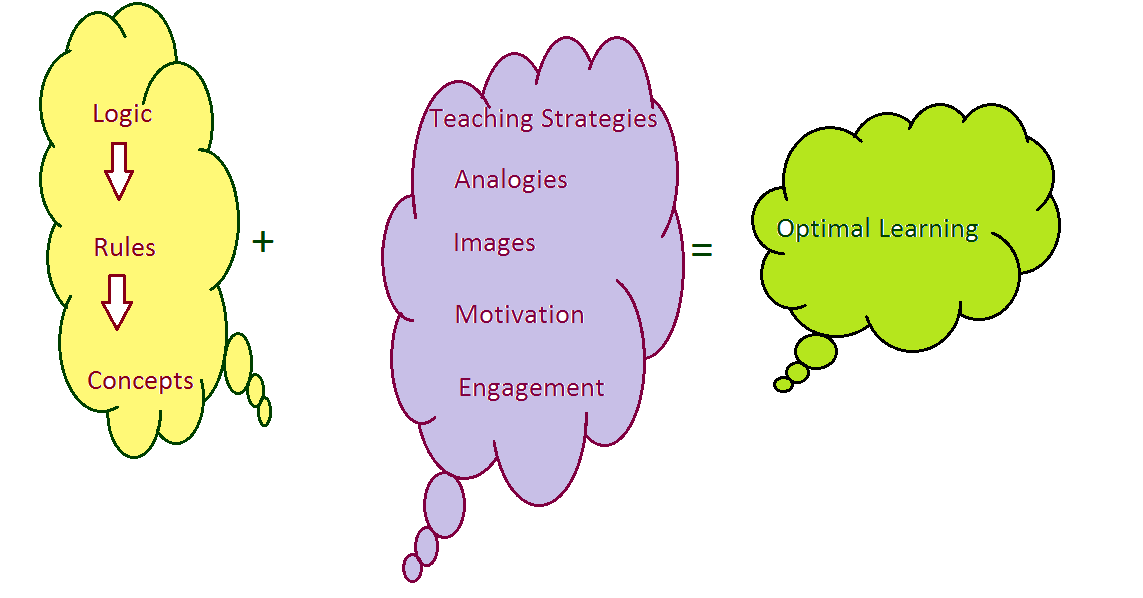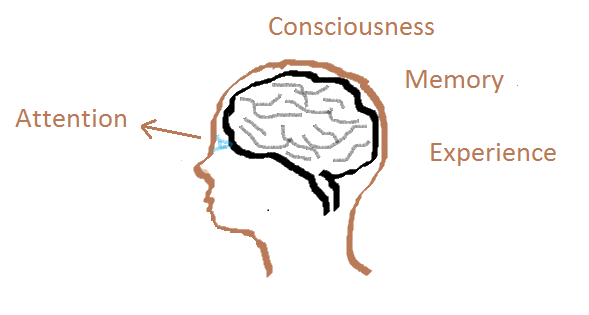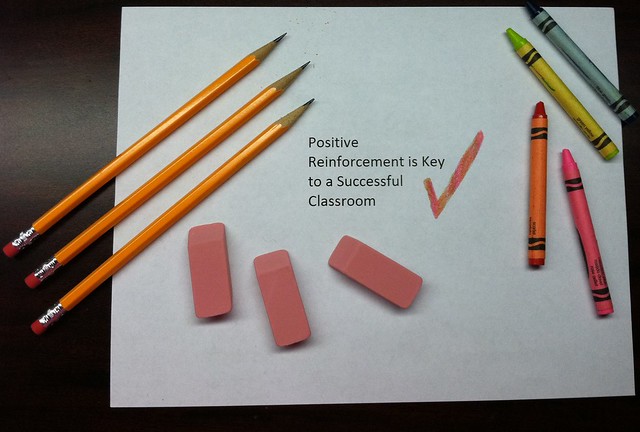In my Cognitive Science of Teaching and Learning class I have truly formed an in-depth understanding of how logic, rules, and concepts can impact a student’s learning and influence the way an educator implements teaching strategies in the classroom. The tools that teachers can use to positively influence a student’s learning is by using analogies and images. In addition, it is important for educators to use teaching techniques that help children learn to the best of their ability, which includes recognizing how to motivate students and make learning interesting. Within these concepts, Perkins’ readings have helped me to fully understand how to implement teaching techniques that will create a rich learning environment for every student. As an education coordinator in a non-profit preschool program, it is essential that I am knowledgeable of successful teaching strategies because I am responsible for educating and supporting staff on the specific tools to use in the classroom to ensure students are provided with the most beneficial learning environment possible.
Logic, Rules, & Concepts
I understand how logic, rules, and concepts can be used in the classroom to create students to progress in their learning. When educators teach new information, students use logic to think about what they are learning and make sense of the information. When a student uses logic, he/she uses reasoning to formulate new beliefs based on the new information. Then, the student creates rules regarding the information based on what he/she has learned. The rules establish what will occur in situations and by using logic a student can make inferences on what will happen based on a specific rule. After a student has used logic and rules regarding a specific topic, he/she can create a concept based on what they know. A student can decide based on his/her logic and rules how the information fits into his/her own life and categorize the information for future use.
This process impacts and influences my present learning environment because as an education coordinator, I consistently work with the teaching staff to ensure developmentally appropriate practices are implemented to help students learn to the best of their ability. Teachers need to actively reflect on their teaching practices to ensure they are offering opportunities for students to critically think about what they are learning, ask students to make inferences based on specific rules regarding the information, and create concepts to help categorize the information to help students recognize where they could use the learned information in the future. This process impacts and influences my future learning environment because I will observe teachers in the classroom during activities to ensure they are offering students opportunities to use logic, create rules, and form concepts that challenge students to use higher level critical thinking skills.
In my program, the teachers tier activities to meet each student’s learning needs, which helps students to progress much more quickly in comparison to teaching in a one size fits all approach. This method relates to Perkins’ teaching principle to “work on the hard parts” because he suggested to “engage learners in junior versions that gnaw away at the complexity” (Perkins, 2009, p.100). Therefore, the teachers create activities that gradually work on small concepts in activities that lead up to students learning and accomplishing larger ideas and tasks. This idea also relates to a child’s “zone of proximal development from the Russian psychologist Lev Vygotsky” because the teachers in my program create small group activities that match each student’s ability level to help children progress to the next leveled benchmark in the state standard they are using (Perkins, 2009, p. 164). Therefore, the teachers are trying to “Uncover the Hidden Game” because just “beyond the horizon of readiness’ is another place where hidden games hide” (Perkins, 2009, 163). Teaching strategies I will look for during observations are activities that create opportunities for students to reflect on their own learning and collaborate with fellow classmates to increase understanding of the newly learned information. It is important for teachers to recognize that the process of using higher level thinking and problem solving skills will progress over time. A student will progress at a much faster rate when he/she is offered consistent opportunities to apply higher level thinking skills to what he/she is learning in the classroom.
The process of learning by using logic, rules, and concepts influences and impacts the world of education and training because it is essential that teachers understand the importance of implementing activities that motivate students to be reflective in their thinking and challenge students to think about how the learning connects to their own life. Educators play a key role in creating opportunities for students to expand on their previously learned knowledge and the new information they are presented with. It is important teachers are trained on techniques to implement that can assist students progress in their learning. Teachers can create opportunities for students to participate in “creative problem-solving strategies [which are] defined as techniques that offer multiple ways and angles of considering a problem from which an optimal solution may be selected (Bryant, 2010, p.43). When a student is provided with a problem, he/she needs to use logic to think about what he/she has learned to recognize how to solve the problem. The students also can hypothesize how to solve the specific problem by choosing a learned rule to think about what will happen next when applying the rule. In addition, a student needs to use concepts to categorize the information from the problem and use the outcome that resulted from applying the specific strategies to solve the problem to determine if the strategies would be successful in the future. When students can apply what they have learned into the real world they are learning to “play out of town” because “the whole point of education is to prepare people with skills and knowledge and understanding for use elsewhere, often very elsewhere” (Perkins, 2009, p. 114). Therefore, it is important for teachers to offer many opportunities for students to actively reflect on their own learning and collaborate with fellow classmates to increase understanding of the newly learned information and how it can be applied to their own life. As Perkins (2009) stated, students can “learn from the team” through “rich participation structures” (p. 171).
Prior to learning in-depth information regarding logic, rules, and concepts, I had an understanding of what each of the tools were, but I now comprehend how each of these tools can specifically be used in an educational setting with students in my program, which reflects my personal learning journey. I understand now that it is important for teachers to use all of these teaching strategy tools to help ensure students are provided with the most beneficial learning experiences. These tools help educators encourage students to use higher level thinking skills and assist students in developing a cognitive process of reflective and analytical thinking. Prior to learning about each of the mental representations, I had not thought about how each of the tools can be directly applied to my own professional environment. I now understand how important it is for teachers to use the tools because the more a student is presented with activities to challenge him/her and reflect on the new knowledge, the more a student will progress in his/her learning about the specific subject matter. When a student becomes an active and reflective learner, he/she is learning “the take-charge mindset, the disposition of managing one’s own learning” and how to “learn the game of learning” (Perkins, 2009, p. 195). Also, prior to this course, I was unaware of the cycle of learning the mental representations create. Each of the tools builds to form a foundation for the next learning tool. For example, when one uses logic, a person can then formulate a rule regarding the learned information, and one can then create a concept based on his/her reasoning and rules.
Analogies & Images
Analogies and images are two important teaching tools for educators to implement into the classroom while teaching students new concepts. Analogies can be used to compare an object or concept that a child has prior knowledge about to another object or concept that is new to the student. Analogies “are important in problem solving and reasoning. They help a person visualize problems and find ways to solve them…Once an analogy is formed it presents a new idea of what we know before” (Ash, n.d., Slide 2). Therefore, when a teacher uses an analogy, it helps students to connect to their previous knowledge and build upon previously learned concepts. In addition, images are beneficial to use in the classroom because they can help further explain a concept, object, or idea. “Visual and other images play a significant role in human thinking…[because] mental imagery is useful in problem solving” (Ash, n.d., Slide 4). When a teacher is instructing students, the use of analogies and visual imagery can help students better understand the newly learned concepts because they help meet the learning needs of the students. Using analogies can help auditory learners because the students can listen to the discussion of how the information builds upon previous knowledge. Also, using visual imagery can help students who are visual learners because they would be presented with images to reflect on to help learn the new information.
Analogies and images impact and influence my current and future professional learning environment because they are important tools to consistently implement into the classroom to help students better understand new concepts. As an education coordinator, I will be meeting with the teachers to discuss how they are specifically implementing both learning tools. I will also observe each classroom while the teacher is instructing students during large and small groups to ensure the teachers are using both analogies and visual imagery to enhance the teacher’s instruction. After I have observed the classrooms, I will develop future goals for the teachers who had not implemented the teaching tools and provide the teachers with specific examples of how they can create lessons where they can be used. I will explain to the teachers the importance of using analogies and images and how they especially benefit the students who learn through auditory and visual cues.
Analogies and images impact and influence the world of education and training because they are important instructional teaching tools that enhance a teacher’s instruction. Each student in a classroom has his/her own preference regarding the way he/she learns and it is imperative that teachers recognize this. Therefore, teachers need to plan for a variety of differentiated instruction to meet the needs of students and observe and reflect on the progress students are making to influence how future activities are created to ensure each student’s learning needs are met and teachers are helping each child progress to the best of his/her ability. Using analogies and visual images are two teaching tools educators can use to help meet the learning needs of students, especially those who are auditory and visual learners.
Prior to learning in-depth concepts regarding analogies and images, I had an understanding of how to use them in the classroom, but I now comprehend how they can be used to enhance a teacher’s instruction to meet the learning needs of the students. For example, I knew to ask students about their prior knowledge regarding a specific topic or idea, which is shown through using the K-W-L chart and filling out the first column by asking students what they already know. However, I now would like to have the teachers implement analogies into instruction by presenting the students with new knowledge and ensuring they are connecting the ideas to previously learned concepts during activities. I believe this will help students build upon their previous knowledge and encourage students to use critical thinking skills to be more reflective of their learning. In addition, learning about visual images has reinforced to me how essential it is to consistently integrate pictures into the students’ learning, which is significantly important for students in preschool because most are unable to read and they, therefore, learn information through pictures, their senses, and hands-on activities.
Motivation & Engagement
In addition to knowing specific teaching tools to use with students in the classroom to help students learn to the best of their ability, it is also equally important for teachers to present information to students in an interesting way to help them become engaged and stay attentive as well as motivated and excited to learn about the topic. The more a student is involved in his/her learning, the more a child will progress in his/her knowledge and critical thinking skills. When a student is interested in what is being taught, he/she will be motivated to be engaged in activities and discussions. This idea relates to Perkins’ (2009) principle of teaching to “make the game worth playing” because motivation, especially “intrinsic motivation [has shown to predict] greater achievement” with students (p.55). As a student becomes motivated in his/her learning, he/she is more apt to want to continue learning about the topic/concept and further his/her learning. In addition, when activities and learning tasks become more challenging, it is essential that each student is engaged in what is being taught so that the student can absorb and understand the concepts. If a student loses interest in the topics being discussed, the teacher will not have the student’s undivided attention because his/her mind will be elsewhere. “When we withdraw attention from an event or object, we lose consciousness of its attributes and properties” (Ahmadi, Gilakjani, & Ahmadi, 2011, p. 1366). Therefore, if a student is not engaged and loses interest, he/she will not learn the information and will be unable to use it for future reference. “The whole point of education is to prepare people with skills and knowledge and understanding for use elsewhere, often very elsewhere” (Perkins, 2009, p. 114). For this reason, it is necessary for teachers to ensure they are providing engaging activities that will motivate students to want to learn, which will help students use the information in similar experiences in their own environment.
The idea that teachers need to provide motivating and interesting activities to help students stay attentive and learn has impacted my present and future professional learning environment because I will reinforce to the teachers in my program the importance of creating engaging activities. When teachers implement activities that result in excitement from the students, it helps to eliminate challenging behaviors because the students are focused and interested in what is being taught. I will support the teachers in helping them find exciting ways to reinforce concepts that will be taught to ensure students wish to be actively involved in the planned activities. In my profession, I urge teachers to use a project approach when creating and implementing activities for students. This approach is “effective in helping students understand, apply, and retain information. Other benefits include building skills like critical thinking, communication, and collaboration. Students who work on projects show increased motivation and engagement in their studies” (Edutopia, 2009). This idea relates to Perkins’ teaching principle to “Play the Whole Game” because Perkins (2009) stated “project-based learning by definition involves big wholes that take some time to work through” (p. 32). When using this method of instruction, teachers choose a central theme, which is mainly based on what the students are talking about in the classroom and connects to the students’ life experiences.
Providing motivating and interesting activities impact and influence the world of education and training because it is important for teachers to recognize how their teaching practices and planned activities have an impact on each child’s learning in the classroom. When students are engaged and excited about learning in the classroom, it helps the students better learn the information because their attention is focused on the concepts being taught. In my program, I reinforce to teachers during professional development trainings the importance of creating engaging activities. When students are involved in their learning and pay attention to what is being discussed, it helps to ensure they retain and remember the information to later use in similar experiences. The more this idea is reinforced in the field of education, the more students will be offered an engaging learning environment where teachers strive for students to learn to the best of their ability.
Motivating and engaging students in their learning impact and influence my personal learning journey because I understand the importance of providing children with activities that create them to want to be actively involved. As I move forward in earning my Master’s Degree in Education with a Concentration in Teaching and Learning, I wish to look further into studies that have been conducted helping to prove that motivation does have a positive influence on a student’s education and learning. I am interested in learning more about the impact that intrinsic and extrinsic motivations have a student’s education. I strongly believe that teachers are very influential on a student’s learning journey and it is important for teachers to consistently strive to offer students with a positive and encouraging learning environment where students feel confident in their abilities. When teachers motivate, encourage, and offer engaging and interesting activities, students are more apt to want to pay attention and learn.
The following link helps to reinforce the ideas discussed throughout the course and expand on additional techniques that can be used in the classroom to provide a learning environment where students can learn to the best of their ability.
https://www.youtube.com/watch?v=cNnDuOePMH4
References:
Ahmadi, M., Gilakjani, A., & Ahmadi, S. (2011). The relationship between attention and consciousness. Journal of Language Teaching & Research, 2(6), 1366-1373. Retrieved from http://ehis.ebscohost.com/ehost/pdfviewer/pdfviewer?sid=1b316c4d-435f-4a76-bd11-c435f9e7e36d%40sessionmgr198&vid=2&hid=109
Ash, D. (n.d.). Edu 510 the cognitive science of teaching and learning, unit 3 analogies/case & images [Presentation slides]. Retrieved from http://www.postid.net/edu/edu510/unit3/index.htm
Bryant, C. (2010). A 21st century art room: The remix of creativity and technology. Art Education, 63(2), 43-48. Retrieved from http://ehis.ebscohost.com/ehost/pdfviewer/pdfviewer?sid=e9f5fbd8-5470-48bc-b8c8-a7fe41244369%40sessionmgr11&vid=11&hid=2
Edutopia. (2009, March 2). An introduction to project-based learning [Video file]. Retrieved from http://www.edutopia.org/project-based-learning-introduction-video
Perkins, D. (2009). Making learning whole: How seven principles of teaching can transform education. San Francisco, CA: Jossey-Bass.
StGermain, K. (2012, March 24). Optimal learning environment [Video file]. Retrieved from https://www.youtube.com/watch?v=cNnDuOePMH4







